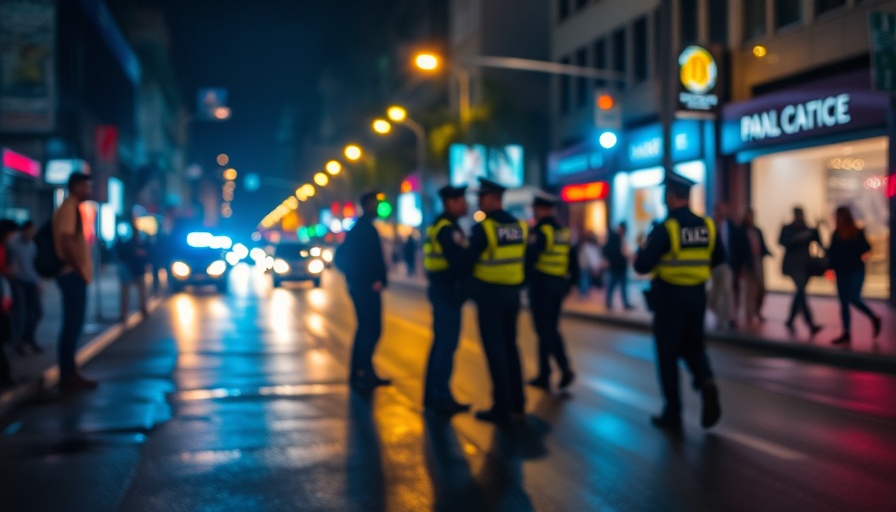
Violence Erupts in Ohio: A Close Encounter
A dramatic and dangerous confrontation unfolded recently in Ohio when a man opened fire on officers, triggering a multi-agency pursuit that caught the community's attention and raised urgent questions about police safety and response strategies. This incident not only underscores the inherent dangers law enforcement officers face but also highlights the growing need for enhanced training, technology, and community engagement in public safety.
The Importance of Technology in Law Enforcement
As police departments grapple with increasing violence, the integration of technology stands out as a pivotal tool in enhancing officer safety. Innovations such as body cameras and AI analytics are becoming increasingly common in policing. These tools not only assist in real-time decision-making but can also play crucial roles in post-incident analyses. For example, video footage captured during active shooter situations can provide insight into response tactics that could save lives.
Moreover, by incorporating advanced surveillance methods, officers can often de-escalate potentially volatile situations before they escalate into violence, thereby protecting both themselves and the community.
Training Programs: Preparing Officers for High-Risk Scenarios
The pursuit in Ohio exemplifies why comprehensive training programs focusing on high-stress and high-risk scenarios are essential for modern law enforcement. Programs that include simulations based on real-life events can prepare officers for situations like this confrontation effectively.
Furthermore, incorporating mental health training within these programs can help officers manage stress and develop resilience, emphasizing officer wellness as an integral part of law enforcement culture. A focus on mental health is vital not only for officers’ well-being but also enhances community relations, ensuring they can serve effectively under pressure.
Engagement with the Community: Building Trust Through Transparency
One critical aspect that often surfaces in law enforcement discussions is the need for transparency and accountability. Community trust can be significantly enhanced when police departments actively share information regarding incidents and the protocols followed during high-stress responses.
Engaging in community outreach programs can foster a collaborative environment, where citizens feel invested in public safety. Community policing initiatives where officers build personal connections can dramatically change the nature of police-community relations, potentially preventing violent encounters before they begin.
The Future of Policing: Insights and Predictions
Looking forward, we can expect several trends that may shape the landscape of law enforcement following this incident. The growing adoption of body-worn cameras is likely to become standard nationwide, providing accountability while simultaneously offering opportunities for valuable training material.
As communities advocate for police reform, there will be increased pressure on departments to adopt policies that prioritize de-escalation tactics and mental health resources. This could result in more nuanced understandings of force usage, shifting the paradigm towards greater accountability and community collaboration.
Conclusion: The Call for Proactive Measures
The recent shooting incident in Ohio serves as a stark reminder of the volatile nature of police work and the pressing need for robust training, advanced technology, and community engagement. To enhance public safety and protect law enforcement personnel, proactive measures must be prioritized. Policymakers and police leaders are encouraged to evaluate current strategies critically and adapt to emerging trends. Emphasizing officer wellness, promoting transparency, and investing in technological advancements are key steps toward fostering a sustainable and trustworthy law enforcement landscape.
As we reflect on the details of this incident, now is the time for all stakeholders to engage in meaningful dialogues that shape the future of policing. Together, we can build a safer environment for both officers and the communities they serve.
 Add Row
Add Row  Add
Add 

 Add Element
Add Element 




Write A Comment